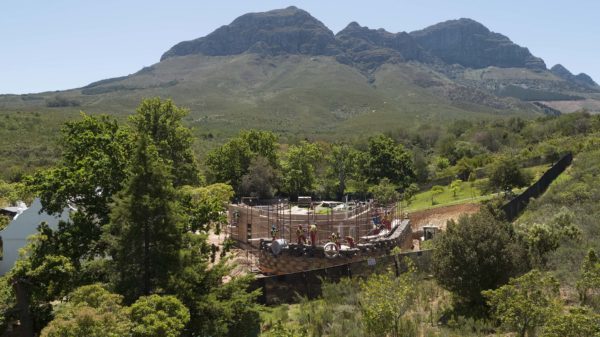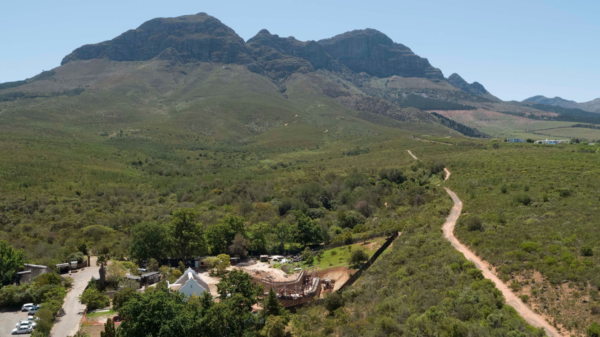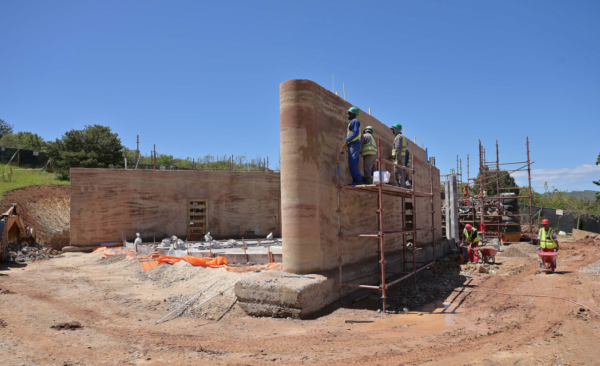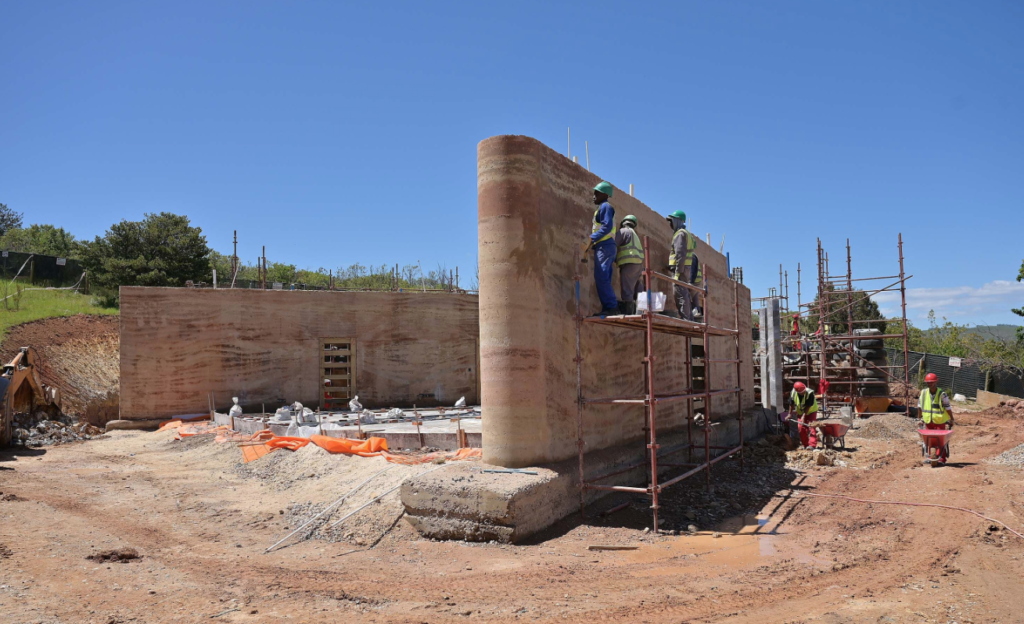Rammed earth walls, tyres, recycled building rubble and eco-bricks. These are the building blocks of a brand new multi-purpose centre in the City of Cape Town’s Helderberg Nature Reserve.
The construction of the multi-purpose centre started in June, shortly after the easing of the national lockdown regulations related to the COVID-19 pandemic, and it is due for completion by June 2021 if all goes as planned.
Built in the shape of a horseshoe, the centre faces the magnificent Helderberg Mountain with its indigenous fynbos.
The Helderberg Nature Reserve is one of the City’s 21 nature reserves, which protects rare fynbos and provides a host of benefits to residents and visitors to Cape Town. Some of these benefits include education, recreation, tourism, job creation and skills development.



“We are building this centre in one of the most beautiful settings in Cape Town. It is designed to be carbon-neutral, and the materials that we are using were carefully selected in an effort to respect this natural environment. The design is also informed by resource efficiency – the sustainable use of water and energy – as it is imperative that we consider our natural environment as we are building a resilient Cape Town that can withstand the impact of climate change,” Mayco Member for Spatial Planning and Environment, Marian Nieuwoudt.
“The centre will be fitted with a solar photovoltaic system to generate its own electricity, a system to recycle water, and a water filtration scheme that will be linked to the other existing infrastructure on the site.
“We are busy creating something special, which will showcase sustainable building practices, and contribute towards a greener and more sustainable structure. Leading by example, we want to inspire the private sector to also investigate alternative and greener building material, and to implement water and energy wise systems that will preserve our limited natural resources,” she added.
The multi-purpose centre will facilitate environmental education programmes and various other visitor activities.
Another interesting aspect of the centre is the creation of a tyre wall.
“The tyre wall is built with recycled truck tyres that are filled with recycled G5 earth material from demolished building sites. These are compacted with sledge hammers to form a solid base. Once compacted, the next row of tyres are stacked, up and up, until the wall is high enough. Given that almost every bit of material is recycled, the wall has a very low energy footprint, and what is more, we are using tyres that would have been destined for landfill. I’m really looking forward to the completion of this project and the day when we can open the centre to visitors,” said Nieuwoudt.
Picture/s: Supplied

